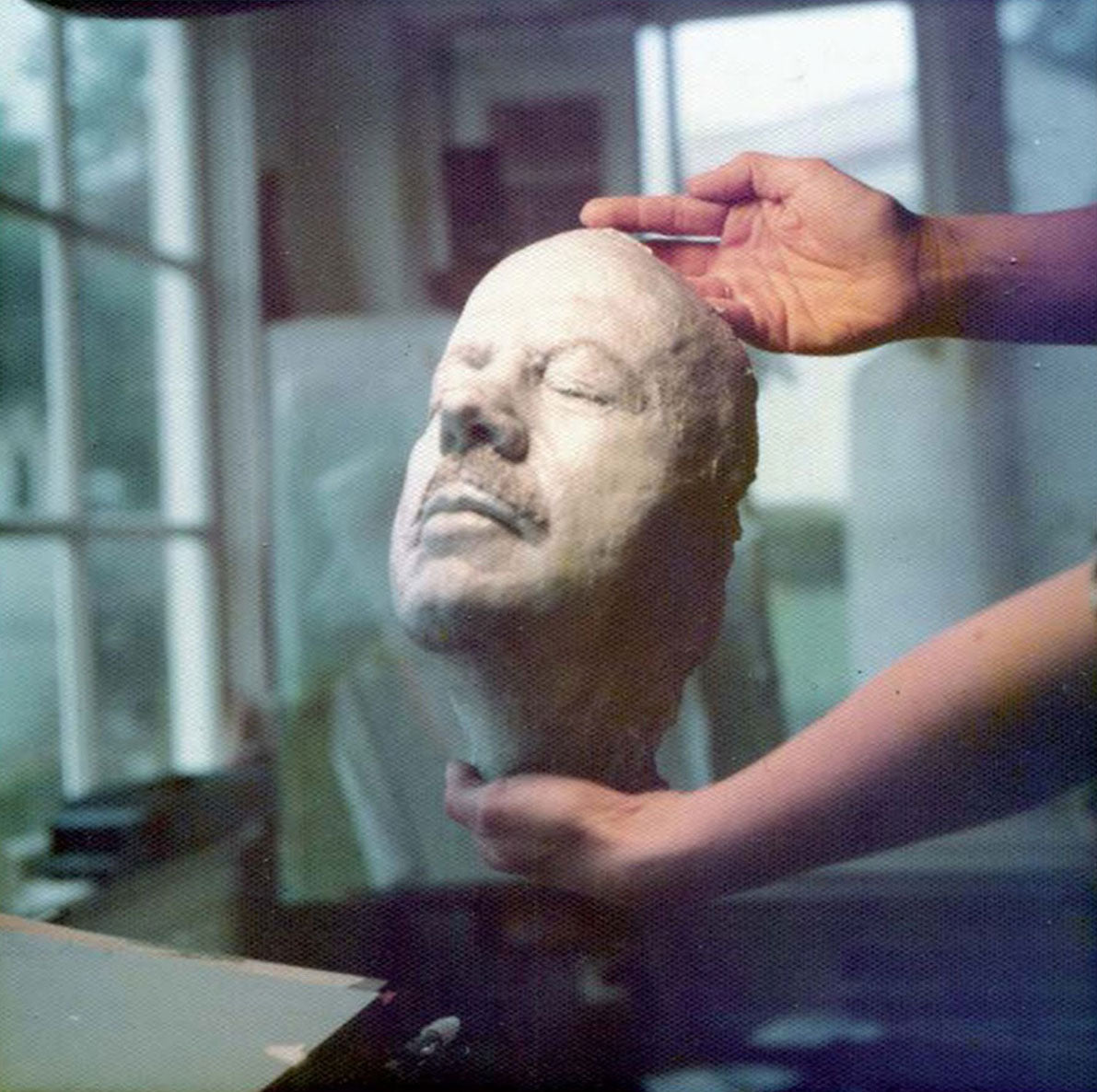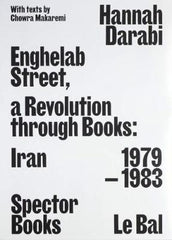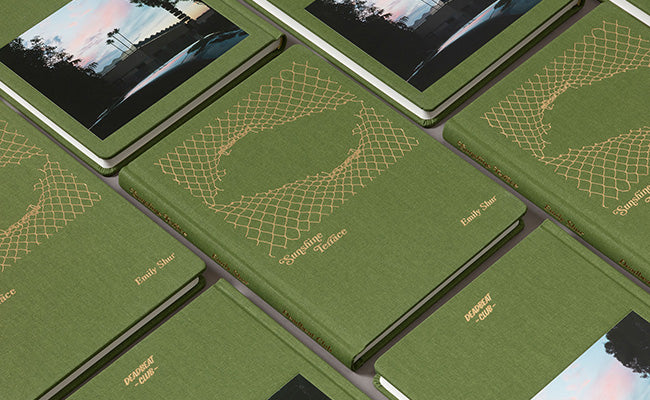
PHOTOBOOKS OF NOTE 2019 - BRAD FEUERHELM
Preface: It is impossible to make a list in which 10 titles in 2019 share the most coveted, best, etc. spot in terms of greatness. It was a ridiculously brilliant year. I’m going to divulge here and now that I have written three lists for different outlets. This list like the others is non-hierarchical. The megaultrasuper list will be with my day job at American Suburb X. So the titles I am providing to Deadbeat Club are but one way to look at the incredible offerings of 2019.
Also, please be aware, I have missed loads of stuff. Some of that is on not receiving your copy to review…ahem.

Tim Carpenter. Christmas Day, Bucks Pond Road.
The Ice Plant.
I missed out on Local Objects when it dropped and managed to track it down at Micamera in Milan. Where that book felt open, free and like a gentle study or mediation on the rural and hushed, along comes “Bucky” and subverts and opens up how we look at one specific place and a specific time by an author whose passionate and longing investigation along the bramble and asphalt gives the viewer the greatest gift, that of space to contemplate its possibility without hefty intervention. It is a book of deafening silence and austere vision.

Mike Slack. Walking in Place 2.
The Ice Plant, Co-Published with Perimeter.
This is my first year looking at Mike Slack’s work and oddly enough I feel a bit of kinship with him for publishing a book on Berlin during the year of the 30th anniversary of the fall of the Berlin Wall. I believe Michael Ashkin’s Horizont to be one of the few other books along with mine on the subject-that all three were published by Americans also makes it oddly compelling. This is my first analysis of Mike’s books, which came to me in November this year. I think of what he does and perhaps Ashkin and myself as a strange wave of street-oriented image-making. Slack’s photographic world is incredibly peculiar focusing on fragment, de-contextualization and the rhythm of color and line. Though it sounds nearly pithy to re-iterate in this way, his way of seeing the under-observed serves a purpose to elucidate our contemporary condition that is at once stylized and very much needed.

This is an incredible study of Iranian photobooks produced at a time in the country’s society was under tumultuous change. Darabi, a talented artist and researcher worked painstakingly to locate and contextualize these books. Where most photobook anthologies function as an uncomfortable ode to nationalism, Darabi’s book functions obliquely as a politicized inquiry in which by display and selection alone, she begs larger questions about contemporary Iran.

Terri Wiefenbach. Des oiseaux.
Editions Xavier Barral.
Terri is one of the most underappreciated artists working in photography. That is not to suggest that she is not appreciated, but completely under-valued. Her books are strange studies of the familiar that border on surreal. Everything has a place and the way in which she places the camera along with the focal length almost distorts their natural world appearance. I keep thinking of Conan Doyle debunking the Cottingley Fairies when I look at the work or as I mentioned to her in November, like I am going to zoom in and find those ants in the ear of Blue Velvet.

Michael Ashkin. Were it Not For.
FW:Books
I don’t think I have seen a book so rich in the use of text in a very long time if ever. There is something incorruptibly beautiful in Michael’s images of decay and wayward sackcloth and ash forms. I am reminded of a latent New Topographics, but with a bittersweet instead of angry disposition. I guess there is romance in all ruins, but with Ashkin, it feels more like a goodbye and a sigh of relief for it.

Prescient to say the least and another book in which the tension of text and image bounce back and forth between the pages playing on stereotype and folly in small town America. Schuman’s sweet disposition belies the darker matters at heart within a number of the images, but his role is to question before condemnation, which is a rare and subtle attribute to have in a day when outrage rules for its own misbegotten sake.

Nicholas Muellner. Lacuna Park: Essays and Other Adventures in Photography.
Self Publish Be Happy.
Nicholas is our gift. He is a brilliant photographer, but even more rare, he is a brilliant photographer that can actually write!!! You can’t have both-I know this and so do a few other “esteemed” writers who make poor images while shuffling decent words. Lacuna Park is the severe antidote towards a way of speaking on photography that has become overly academic and fantasy-driven by its political aims, ambitions and innuendos. In a year where a number of titles have claimed some sort of political audacity, Muellner asks to stop the goddamn world and think through images, to hold them both dear and at arms proverbial length. I don’t know why, but I feel if early Jeffrey Eugenides had photographic value, Muellner would have harnessed its endearing potential for our examination. This book is arguably the most universal book written on photography since Sontag or Batchen. This is much needed reading for the cancer of our times.

Garret Grove. Errors of Possession.
Trespasser.
That damn telephone pole, or lack thereof image still haunts me since I first saw it. Once you see it, you can’t shake it. Its pure beauty and wrong in all the right ways. The rest of the book is a beautiful foray into Americana, evaluating as we are want to do in the age of Trump our nation, our values and our image. This comes at a time when many artists are looking for answers to our situation and reflecting gravely on possible outcomes, errors or otherwise. Garret’s book adds to the lexicon of our time in thoughtful ruminations throughout the land.

Lisa Barnard. The Canary and the Hammer.
MACK.
Lisa makes me feel small almost incompetent with making photographs. Her work is vast and deep. It is like an inverse volcano where one can view the possibility of its potential as an ocean of lava. All platitudes and crude metaphors aside, her research and ability to corner a political, economic and cultural symbol such as gold at its most wide is honorable. I still flip through the book and its images, which are produced spread over continents and think…”how is this possible to make work like this in only a few years”? Barnard keeps the bar high and the results can be overwhelming.

Mark Steinmetz. Carnival.
Stanley Barker.
I will say it again, but I feel like I shouldn’t like Steinmetz’s work. Every time I see his work, everything in my cold, minimal and misanthropic self screams “NOOOOOO!, BAD! Stop it!” and for the life of me, the more I rebel, the more I get drawn into the web of Mark’s patient, soft and caring world. I have not seen one other successfully illustrative artist making work like Steinmetz. There is something so intense, quality-driven and accepting in the work that eludes to manifest negativity in me. Endearing, sometimes elusive in so much as chronology is concerned, Mark has come to exemplify the reasons I stick with looking at images of people at all. Also, StanleyBarker year five are murdering the design and product game.

Maja Daniels, Elf Dahlia.
MACK
I tend to find book’s that include archival imagery with contemporary images very difficult to reconcile. I find that contemporary artists that pursue this avenue generally fail as their understanding of historical, archival or vernacular function fails greatly when sequenced with their images. Daniel’s case is different. She has deftly crafted a tome, which honors the intersection of local custom, the archive of a magician (Tenn Lars Persson) and language (Elfdalian). The examination is coupled with Daniel’s own contemporary images of the same geography. Elf Dalian is a spectacularly esoteric language found in one very small community of Sweden. Its existence has defied logical linguistic analysis for ages and its purging over the last few hundred years has been cause for speculation. The language itself is associated with the folkloric traditions of the region in which pagan witch trials also occurred. The examination of otherness and language, xenophobia and nationalism are implicit and make an unnerving parallel to Swedish society today as it wrestles with mass immigration and rightwing defiance towards it. Daniels brilliantly weaves several tethered threads together to examine these potential speaking points brilliantly.
Brad Feuerhelm is the one of the founding fathers of American Suburb X, one of the finest websites about photography on the internet. He is also a photographer who released a great book on Mack this year called Dein Kampf, which we highly recommend.






